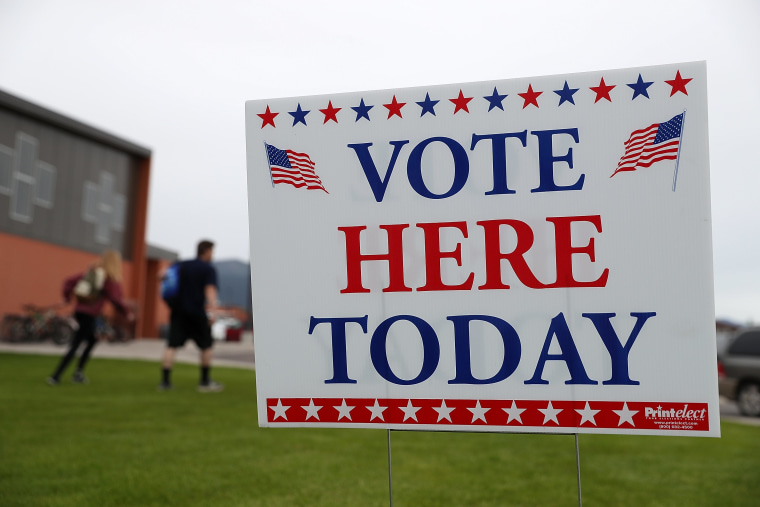Just below the surface of a deafening 24-hour political news cycle spurred by early morning tweets and evening scoops, a quieter but potentially much bigger story is working its way through American politics. The two parties are changing, and President Donald Trump's election may be as much a result of larger shifts between Republicans and Democrats as it is a cause of them.
An analysis of the NBC News/Wall Street Journal poll since 2010 shows changes in who is calling themselves a Democrat (increasingly college-educated and younger voters) and who is calling themselves a Republican (older, working-class white voters).
Taken together, the numbers suggest that the tremors shaking the political scene in the last two years run much deeper than just Trump, and they may be a signal of fundamental changes to the American political landscape that outlast his time in the White House.
Education is one key measure.
In 2010, the year of the first midterm elections for President Barack Obama, registered voters whose highest level of education was a four-year degree were slightly more likely to say they were Republicans (41%) than they were Democrats (39 percent).
But by 2016, the numbers had flipped. Only 38 percent of the voters in that group called themselves Republicans, a three-point drop, while 45 percent of them said they were Democrats, a six-point increase.
The reverse is true on the other end of the education spectrum: Those without a high school education or less are increasingly leaning toward the GOP by an increase of 5 points since 2010. Democrats still hold the edge with this group of voters, but by only the narrowest of margins (40 percent Democrat to 39 percent Republican).
The changes within the parties extend beyond education levels.
Between 2010 and 2016, Republicans saw a 4-point increase in the number of 50- to 64-year-old voters who identify themselves as members of the GOP and a 6-point increase the number of men over the age of 50 who call themselves Republicans.

Meanwhile, there was a 6-point increase in the number of 18- to 34-year-olds who label themselves as Democrats.
And polls from 2017 show the trends have continued in the opening days of the Trump administration, particularly among Republicans. Consider the figures around education for the GOP.
The percentage of registered voters with at least a college degree who call themselves Republicans in the NBC/WSJ poll has fallen from 35 percent in the fourth quarter of 2016 to 33 percent in the beginning of 2017 to 31 percent in the latest survey.
Meanwhile, among registered voters with a high school education or less, the number calling themselves Republicans has gone from 39 percent in in the fourth quarter of 2016 and to 41 percent the latest NBC/WSJ poll.
And ultimately, these shifts are about more than party demographics. They are the kinds of changes that have policy implications. For instance, the wants and needs of those with a college education are different than the wants and needs of those without one.
The unemployment rate for those with at least a Bachelor’s degree was 2.7 percent or lower in 2016, according to the Bureau of Labor Statistics. For those with a high school diploma or less it was 5.2 percent or higher. The median weekly wage for those with at least a Bachelor’s was $1,156 or more in 2016, according to BLS. For those with a high school diploma or less it was $692 or less in 2016.
Similarly, the changing age divisions in the parties suggest policy impacts — concerns about college costs and debt with one group versus concerns about entitlement programs with the other.
Added together, those differences likely had real meaning in the 2016 campaign. Those without a college degree were much better targets for the Trump campaign’s promise to bring back blue-collar jobs that were lost in previous decades. And older voters were better targets for the Trump campaign’s promise to bring back a bygone era, to “make America great again.”
When you think about the numbers and their implications that way, you begin to see the Trump presidency differently.
There is no question that Donald Trump is a unique figure in American political history, one who is bringing different approaches to Washington in many ways. But his presidency may be as much a result of larger changes in American politics as it is a cause of them.
And even if Trump is remaking the Republican Party, the data suggest changes were already underway in the GOP and the Democrats, brought on by socio-economic and cultural shifts – everything from growing prosperity in urban areas to changing attitudes toward LGBT issues and climate change.
In other words, the headline generating turbulence of the Trump presidency may simply be marking the beginning of a longer unsettled era in American politics as the two parties transform themselves in the coming months and years.